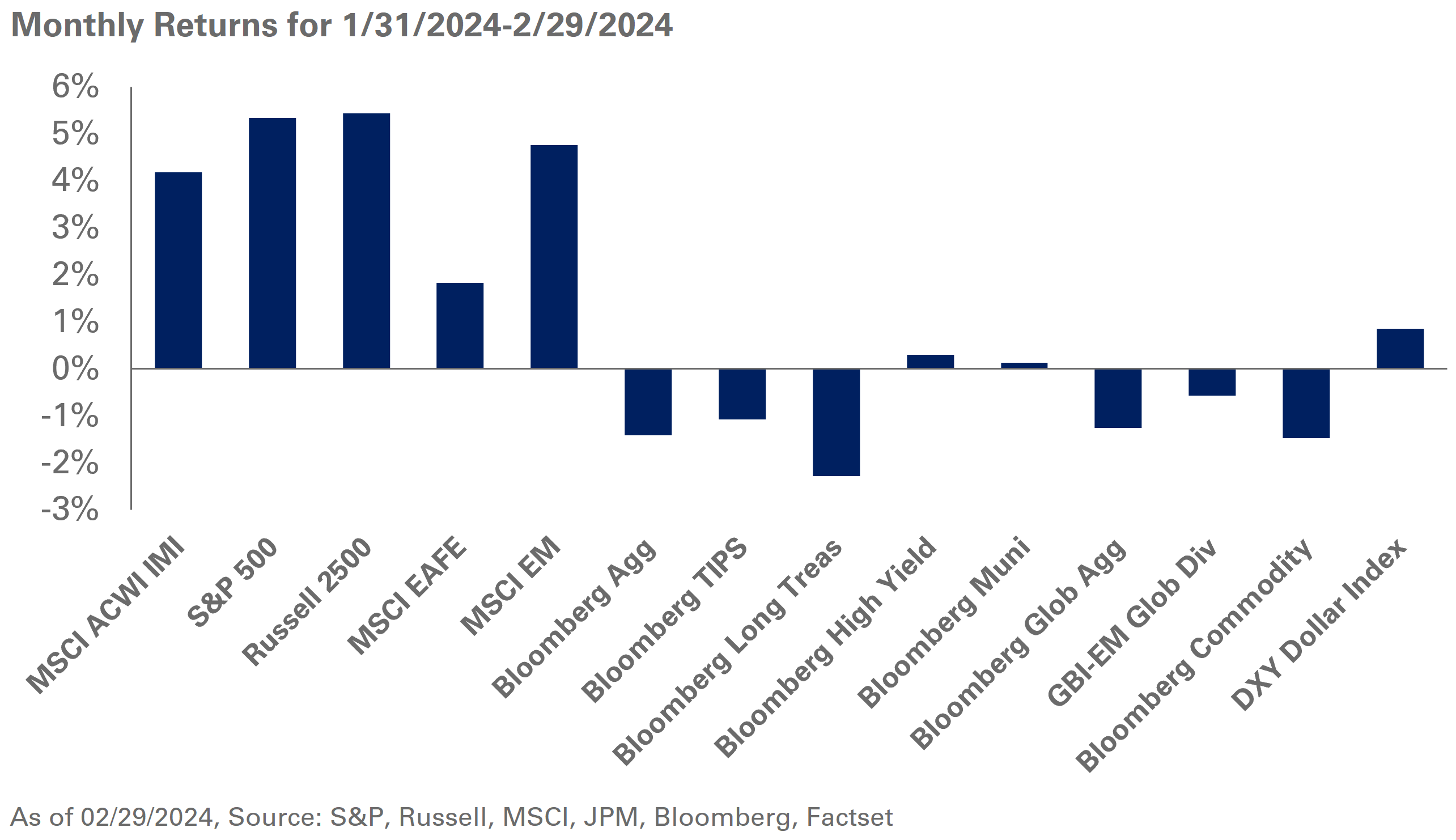A slew of stronger-than-expected economic and corporate earnings data bolstered global stocks in February. The S&P 500 Index hit multiple milestones during the month: it surpassed 5000 and Nvidia set a record for the largest single-day market capitalization gain of $277 billion; the S&P 500 gained 5.3% last month, pushing year-to-date returns to 7.1%.
Outside the U.S., the MSCI Emerging Markets Index added 4.8% in February. The rally was fueled by supportive policy announcements from China, including a surprise 25 basis points cut to its five-year loan prime rate. In response, the MSCI China Index added 8.4% in February, even as the index remains in the red year-to-date. Meanwhile, the MSCI EAFE Index lagged, adding 1.8% as economic weakness in Europe weighed on returns, while Japanese equities hit a 30-year high.
Economic resilience caused markets to reprice expectations for interest rate cuts by the Federal Reserve later this year. Fixed-income returns were pressured by rising yields: the 10- and 30-year Treasury yields added 29 and 17 basis points, respectively, resulting in a 1.3% monthly decline in the Bloomberg U.S. Treasury Index. Despite rising rates, lower-quality credit rallied, underscoring the robust economic backdrop. The option-adjusted spread on the Bloomberg U.S. High Yield Corporate Index tightened 32 basis points; the index eked out a 0.3% monthly gain. U.S. dollar-denominated emerging market debt also rallied 1% as the option-adjusted spread on the JPM EMBI Global Diversified Index declined 28 basis points in February.
Within real assets, the Bloomberg Commodity Index fell 1.5%. Despite spot WTI crude oil adding 2.6% for the month, other energy and agriculture commodities weighed on index returns. Notably, spot natural gas prices declined 14.9%, reflecting the oversupply along with a warmer-than-average winter weighing on demand.
Following the recent strength in U.S. equities, we still recommend investors reduce S&P 500 and U.S. mega-cap exposure in favor of U.S. value positions. Additionally, we continue to believe the market remains overly aggressive in projecting falling interest rates in the near term and are comfortable holding greater levels of cash to bolster portfolio liquidity. We also recommend investors broadly evaluate the risk-return benefit of fixed income and look to add U.S. TIPS to capitalize on the current real rate environment.




